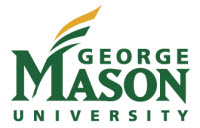Below is a summary of the abstract you submitted. Presenting author(s) is shown in bold.
If any changes need to be made, you can modify the abstract or change the authors.
You can also download a .docx version of this abstract.
If there are any problems, please email Dan at dar78@pitt.edu and he'll take care of them!
This abstract was last modified on March 21, 2023 at 4:10 p.m..

Bacteriophages are significant drivers of bacterial evolution. As bacteria mutate to avoid infection, phages evolve and develop ways to break down and avoid bacterial defenses. This race for survival has resulted in a broad spectrum of diversity within the phage population. The Actinobacteriophages are a group of double-stranded DNA (dsDNA) phages belonging to the order of Caudovirales. Based on their tail structures, these phages are classified as either Siphoviridae, Myoviridae, or Podoviridae. Currently, 343 phages using Gordonia rubripertincta NRRL B-16540 (Gordonia) as a host are registered in The Actinobacteriophage Database at Phages DB.org. However, only nine of these phages are known to have a Myoviridae morphology. The other 334 Gordonia phages have Siphoviridae morphologies. Of the nine Myoviridae Gordonia phages, five were isolated, characterized, and registered by George Mason University students. These five phages presented difficulties during the DNA extraction process and required a modified protocol to obtain the concentrations required for DNA sequencing. Within these Myoviridae Gordonia phages, unique capsid proteins have been identified as responsible for the difficulties experienced using the standard DNA extraction protocol. This study focuses on presenting five novel Myoviridae Gordonia phage genomes in cluster DQ and the phylogenetic and morphological relationships between these cluster DQ phages and other Gordonia phages. In addition, the protocol for the DNA extraction that was used in this study will be presented. The information gained will aid in expanding our knowledge of phages and help further increase their value in both primary and applied research.

